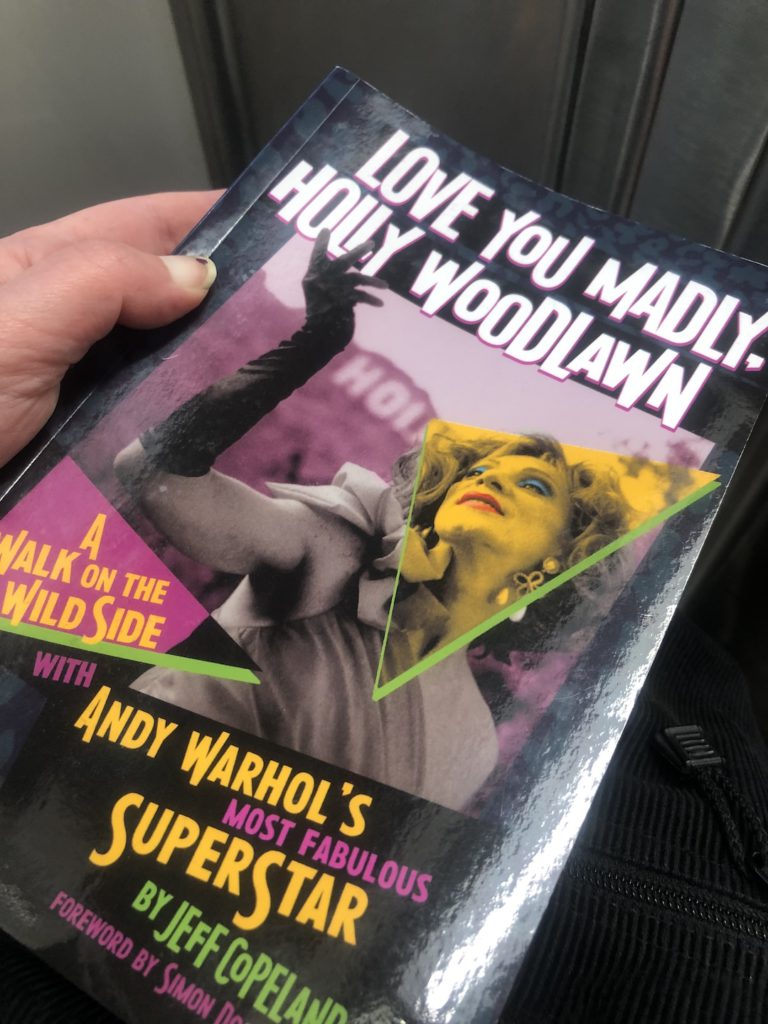
In 1991, Holly Woodlawn released her autobiography, A Low Life in High Heels, written with Jeff Copeland. I haven’t read the book, but it’s high at the top of my list now that I have read Copeland’s recently-released Love You Madly, Holly Woodlawn. The writer’s own memoir is a funny, sweet and engaging story about an unexpected, and sometimes tumultuous, L.A. friendship at the turn of the 1990s. What I loved about this memoir is how Copeland deftly intertwines a story about HOLLYWOOD, as in the movie world, with Hollywood, as in the place.
Woodlawn, who died a decade ago, was best known as the Holly in Lou Reed’s hit, “Walk on the Wild Side.” She was an Andy Warhol superstar who appeared in films like Trash and Women in Revolt. By the late ‘80s, she was living on the West Coast and not exactly in the best place in her life. Copeland was a young writer from Missouri who had moved to L.A. with hopes of breaking into the film industry. Their friendship resulted in A Low Life in High Heels and would be strained, in part, as a result of attempts to turn Woodlawn’s autobiography into a film, which never happened. That’s the HOLLYWOOD part of the story.
Then there’s the Hollywood story, the one about people trying to get by in a neighborhood whose glamorous past has been replaced by a much more anarchic sensibility. This is the pre-gentrification Hollywood, where entry-level studio employees and fabulous-but-broke folks could kind of/maybe/sometimes afford rent and cheap Italian restaurants, where the real stars were the random characters you would see hanging out in the area. This setting sucked me into the book, in part because I did grow up in L.A. and did recognize some of the places mentioned. I never knew about Lizards, the coffee house that Copeland frequented while writing, but I do remember when Wacko was on Melrose Ave. In fact, while reading, I realized that the first time I went there was right around the same time that Woodlawn was an employee at the store. Not that I, a middle school kid browsing with my mom, would have known who she was. At that point, the only Warhol Superstar I heard of was Edie Sedgwick and that was because of The Cult’s song.
While these details may mean nothing to someone who has gone on a post-club Yum Yum run, I think they’re important to the story because they help illustrate the kinds of class divisions that exist in L.A. that maybe people don’t understand unless they live here. By the time of their friendship, Woodlawn was hovering around 40. Her days with Warhol’s crowd were long behind her, and it’s not like she was paid well for her role in Trash. Copeland is much younger and trying to find his footing in a very unsteady industry. The reality that one person can have proximity to fame and the other could have an office job and they’re both often broke has been the reality here longer than people probably realize. I think some of the best scenes in the book are when Copeland shows the disparity between HOLLYWOOD and Hollywood, which happens often throughout the story.
In a way, Love You Madly, Holly Woodlawn is a coming of age story. Copeland is a young, gay man who is a little naive when he arrives in L.A. Woodlawn is a trans woman who has been on her own since she was a teenager. Meanwhile, within their circle of friends, people are dying of AIDS. As the story progresses, you can see Copeland learning not just from his own struggles, but from those of the people close to him.
All this makes for a touching story that, at its core, is about learning to understand people from very different backgrounds. That’s a message that’s as relevant today as it was 35 years ago.
Love You Madly, Holly Woodlawn is out now via Feral House.
Liz O. is an L.A.-based writer and DJ. Read her recently published work and check out her upcoming gigs or listen to the latest Beatique Mix. Follow on Instagram for more updates.
Keep Reading:
The Death of the 1990s Coffee House and the Third Place
Goodbye Horses: The Many Lives of Q Lazzarus Is More Than a Music Documentary
